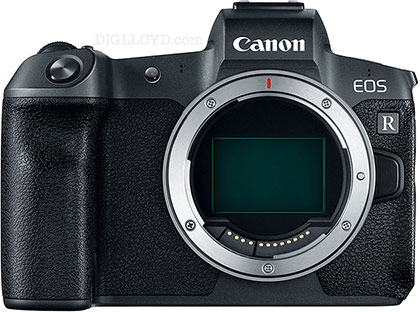Implications of Flange Focal Distance for Adapting Sony Mirrorless Lenses for the Canon Mirrorless RF-Mount and Nikon Mirrorless Z-Mount
See my Nikon Z wish list and Canon EOS R wishlist. (if not yet live, use this link to Canon EOS R system). PLEASE pre-order on September 12 using my links—thanks!
The flange focal distance (FFD aka backfocal distance) is the key factor in whether a lens design can be adapted to another camera mount. I mean “adapted” in a general sense, either inserting an actual lens adapter, or taking the same optical design and lengthening or shortening the lens barrel accordingly.
The shorter the flange focal distance on the target camera, the better, in terms of adapting lenses. Hence the Nikon Z-mount is by far the best possible mirrorless camera mount yet.
Since I shoot Zeiss Loxia and Zeiss Batis lenses exclusively on my Sony A7R III (when not testing), the most interesting question to me is this: which mount makes adapting Sony mirrorless lens designs easier? Of course there are many other 3rd-party lenses out there (Voigtlander, Venus Optics, Rokinon, Samyang, etc), so the question applies equally.
Flange focal distance for various camera mounts
Nikon Z: 16mm <== most amenable to adapting lenses; greatest working room, 55mm diameter
Canon R: 20mm <== Sony mirrorless designs would shortening by 2mm at the rear, 54mm diameter
Fujifilm X: 17.7mm
Sony E: 18mm
L-Mount: 19mm (Leica SL, L-mount Alliance, 51.6mm diameter)
M 4/3: 19.25mm
Hasselblad XCD: 20mm
Leica M: 27.8mm
Canon EF: 44.0mm
Nikon F: 46.5mm
How to think about the flange focal distance vs adapting a lens
Consider a Sony mirrorless lens with backfocal of 18.00mm. Its infinity focus lands 18.00mm from the flange, by definition.
Assume that lens can be glommed as-is onto the Nikon Z-mount. The backfocal distance of that mount is 16.0mm. But the lens focuses to infinity at 18mm—2mm behind the sensor. To rectify that, 2mm of distance must be added, e.g., by lengthening the lens barrel by 2mm.
Accounting for the difference
For the Nikon Z-mount system, the simplest fix is to insert a lens adapter. It would have to be 2.0mm thick which is quite thin and probably suitable only for small and light lenses, e.g., Zeiss Loxia. The 2.0mm thickness might not be feasible, though 2.5mm-thick lens adapters for Nikon F to Canon EF work very well.
For a lens manufacturer to deploy its optical designs on Nikon Z-mount (and assuming patents do not preclude that), the lens barrel would need to be lengthened appropriately, e.g., by 2.0mm for optical designs for Sony mirrorless. This is relatively easy to do. In fact Zeiss already does this with the Zeiss Touit line, which is available for both Fujifilm X and Sony E-mount—those mounts differ by 0.3mm.
For Canon RF-mount, a lens designed for the 18mm flange focal distance of Sony mirrorless would need to shorten the lens barrel by 2mm—often much harder in some cases since it can expose the rear lens element or other parts.
Compared to the Canon RF-mount, the Nikon Z-mount is far more friendly to adapting lenses designed for Sony mirrorless.
There may be lens designs in which shortening the barrel by 2mm at the rear is easy or with few mechanical issues (e.g., exposing the rear element). It might also be possible to recess the lens by 2mm into the throat of the Canon EOS R. But it’s just not as clean as adding 2mm of length. Pretty much a messy affair by comparison.
If a 4mm-thick electronic lens adapter were made, then a Canon EOS R lens could mount on the Nikon Z7. (a 0mm-thick adapter would have the R lens focusing 4mm behind the sensor, so 4mm needs to be added) That might be possible since the lens adapters that I used for years to mount Nikon F lenses (46.5 flange focal offset) on Canon EF DSLRs (44mm FFO) was only 2.5mm thick.
Since I have all of the Zeiss Loxia lenses, I am hoping to see a simple mechanical lens adapter released that would allow mounting Zeiss Loxia on the Nikon Z7. It might lose EXIF info, but I can live with that. The only issue I see is that the adapter would need to be a somewhat awkward 46.1mm flange for the lens which expands to 55mm to mount on the Nikon Z7.
I don’t expect Zeiss to offer Zeiss Loxia or Zeiss Batis lens designs in native mount Canon RF or Nikon Z any time soon, and I don’t want to re-buy another set of lenses—large expense.
Meanwhile, I have no desire to shoot a 30 megapixel camera (Canon EOS R) when I can shoot 45 megapixels (Nikon Z7). So the Canon flange focal distance and the limited resolution that Canon offers make the Canon mirrorless system unappealing to me.
























